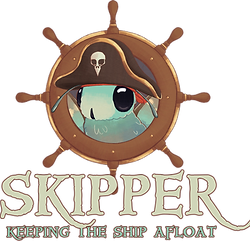
First-person action-adventure
On The Goose
Responsibilities
-
Prototyping player features and levels in Unreal Engine 5
-
Holding playtest sessions & iterating on levels
-
Creating and updating our GDD and keeping our Miro board up to date.
-
Visual scripting of events in our engine
-
Designing mechanics for the player and 3 of the 4 levels.
-
Set dressing the levels
-
Improving the pipeline to make the level accessible.
-
Creating the trailer and gathering sfx.

Project Breakdown
-
Engine: TGE (engine developed by TGA)
-
15 weeks halfspeed
-
Editor: Unity
-
Developer team size: 13
Preproduction
This was my longest project yet, and I felt the importance of documenting as much as I could while ensuring the 3Cs were nailed in our GDD.
Early production was accelerated thanks to a template made by my fellow designer, Emanuel. Having a template with similar features significantly streamlined the prototyping process. I was able to add additional features and fine-tune everything to match our reference game, ensuring consistency and quality.
This preparation proved to be beneficial for the entire team. My fellow designers could start creating the layouts promptly, and the visual clarity of the prototype made it easier to communicate the design intentions to other disciplines. This collaborative effort not only enhanced the overall workflow but also ensured that everyone was on the same page from the outset.

Alpha
To speed up the process of migrating between different engines, I created a structure for my fellow designers to follow, enabling easy level importation into Unity. This framework was essential in ensuring a smooth transition and maintaining consistency across our designs.
The structure I developed for engine migration proved invaluable, as it ensured that my fellow designers could efficiently import levels, allowing us to spend more time refining gameplay and aesthetics. This streamlined approach helped us maintain a cohesive design vision and ensure that all team members were aligned with the project goals.

Replicating the design flow of Mirror's Edge was a key objective. It was crucial to make players feel agile and fast, ensuring the flow remained seamless and directed. By designing levels that guided players through repetitive sections without breaking the momentum, we could maintain an engaging and dynamic gameplay experience. This required a lot of iterations and playtests to perfect the balance between challenge and fluidity.
A significant part of this process involved framing the player's view when entering new areas, reminding them of their end goal throughout the gameplay, and presenting them with beautiful, motivating vistas. This technique not only facilitated movement forward but also enriched the player's immersion and enjoyment of the game world. Each new area was crafted to offer a visual treat, reinforcing the sense of progress and achievement.


Beta
I implemented the visual scripting for all crane-related events, creating dynamic and interactive sequences that added depth to the gameplay. These scripted events made the world feel alive and responsive to player actions, elevating the overall experience. They were co-developed with this fantastic person Tove.
To guide players through the environment, I strategically implemented visual cues and environmental storytelling. By using lighting, set pieces, and other elements, I made the path forward clear without sacrificing the game's challenge or pace.
My set dressing efforts involved crafting visually and functional environments that reinforced the game’s tone and style. This attention to detail enhanced the level’s atmosphere and narrative coherence. Additionally, I handled the placement and behavior of NPCs and enemies, ensuring balanced challenges that fit naturally into the level. I also implemented checkpoints at key locations, maintaining a smooth and rewarding gameplay experience.
PROJECT SHOWREEL
Feel free to scroll through the images to view our process and in-game scenes that I have been a part of.
Credits

Reflections
Throughout this project, I regularly alternated between three of the levels under development. This approach enabled the creation of cohesive levels with a progressive increase in difficulty.
This was the first project at TGA where we had the time to develop a protoype in Unreal. This allowed us to plan and iterate on our blockouts but also plan the foreshadow moments for the end goal. These foreshadow moments played a big part in our level design as we wanted to enhance the feeling of progression.
Through this project, I learned the critical importance of thorough documentation and effective communication within a team. By establishing a solid foundation early on, we were able to navigate the complexities of the project more efficiently and deliver a polished final product. This experience has equipped me with valuable skills and insights that I am eager to bring to future projects in my career as a level designer.







